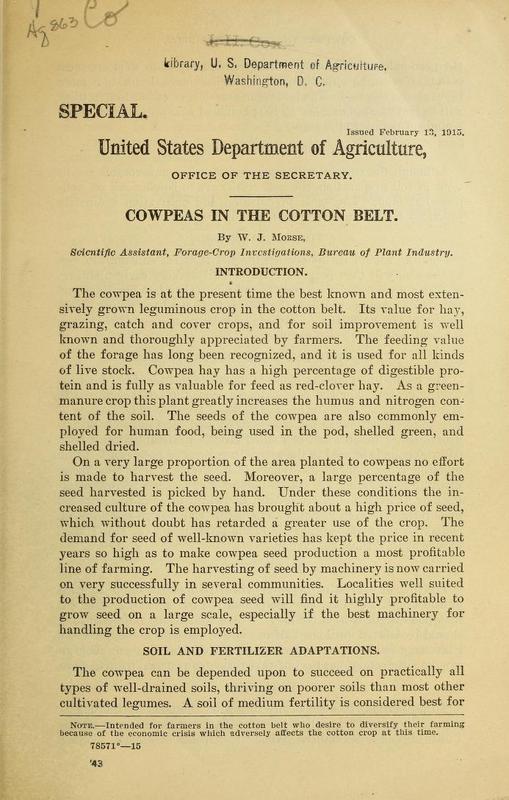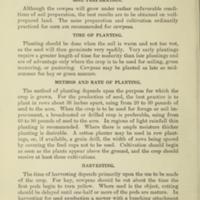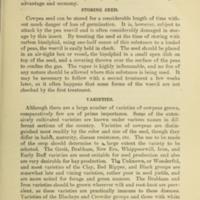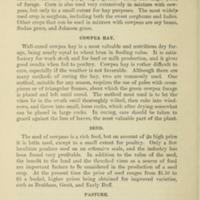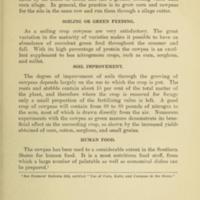Cowpeas in the Cotton Belt
Date
1915
Excerpt
The cowpea is at the present time the best known and most extensively grown leguminous crop in the cotton belt. Its value for hay, grazing, catch and cover crops, and for soil improvement is well known and thoroughly appreciated by farmers. The feeding value of the forage has long been recognized, and it is used for all kinds of live stock. Cowpea hay has a high percentage of digestible protein and is fully as valuable for feed as red-clover hay. As a green-manure crop this plant greatly increases the humus and nitrogen content of the soil. The seeds of the cowpea are also commonly employed for human food, being used in the pod, shelled green, and shelled dried.
On a very large proportion of the area planted to cowpeas no effort is made to harvest the seed. Moreover, a large percentage of the seed harvested is picked by hand. Under these conditions the increased culture of the cowpea has brought about a high price of seed, which without doubt has retarded a greater use of the crop. The demand for seed of well-known varieties has kept the price in recent years so high as to make cowpea seed production a most profitable line of farming. The harvesting of seed by machinery is now carried on very successfully in several communities. Localities well suited to the production of cowpea seed will find it highly profitable to grow seed on a large scale, especially if the best machinery for handling the crop is employed.
On a very large proportion of the area planted to cowpeas no effort is made to harvest the seed. Moreover, a large percentage of the seed harvested is picked by hand. Under these conditions the increased culture of the cowpea has brought about a high price of seed, which without doubt has retarded a greater use of the crop. The demand for seed of well-known varieties has kept the price in recent years so high as to make cowpea seed production a most profitable line of farming. The harvesting of seed by machinery is now carried on very successfully in several communities. Localities well suited to the production of cowpea seed will find it highly profitable to grow seed on a large scale, especially if the best machinery for handling the crop is employed.
Title
Cowpeas in the Cotton Belt
File(s)
Cowpeas in the Cotton Belt 1.jpg
(image/jpeg)
Cowpeas in the Cotton Belt 2.jpg
(image/jpeg)
Cowpeas in the Cotton Belt 3.jpg
(image/jpeg)
Cowpeas in the Cotton Belt 4.jpg
(image/jpeg)
Cowpeas in the Cotton Belt 5.jpg
(image/jpeg)
 An official website of the United States government.
An official website of the United States government.


